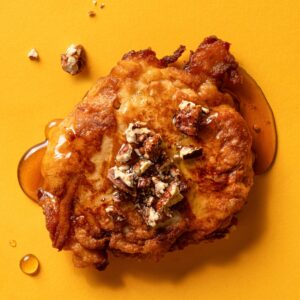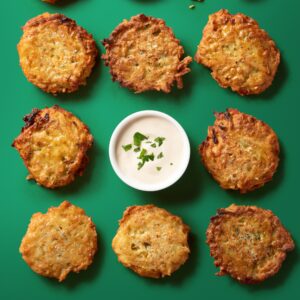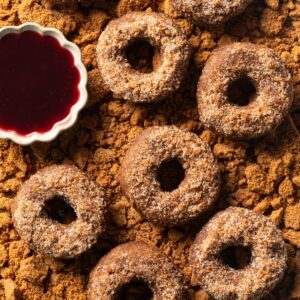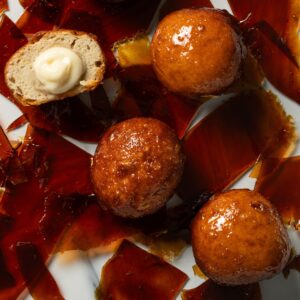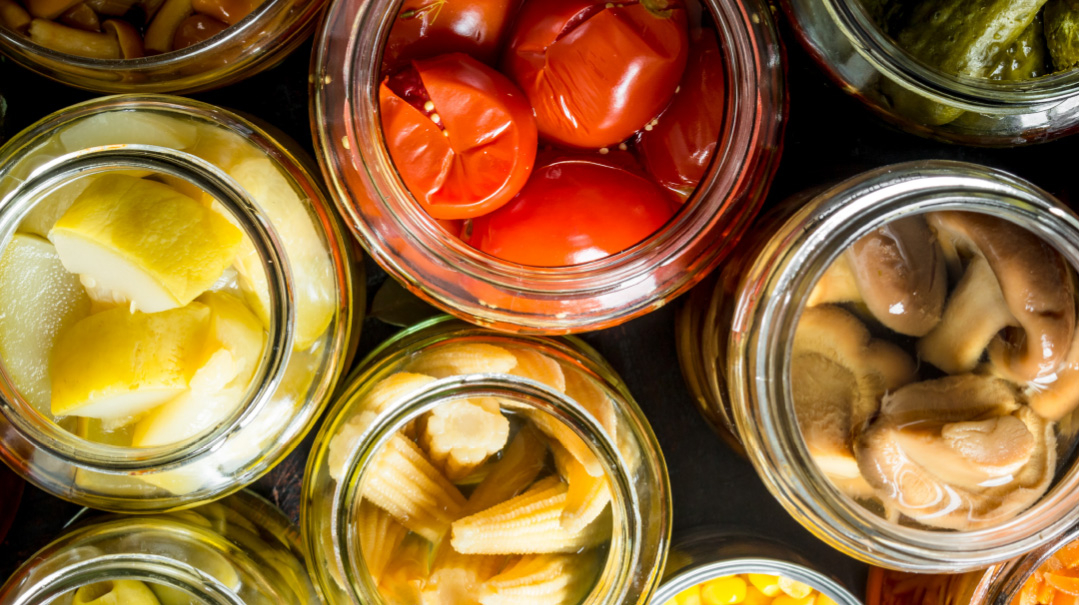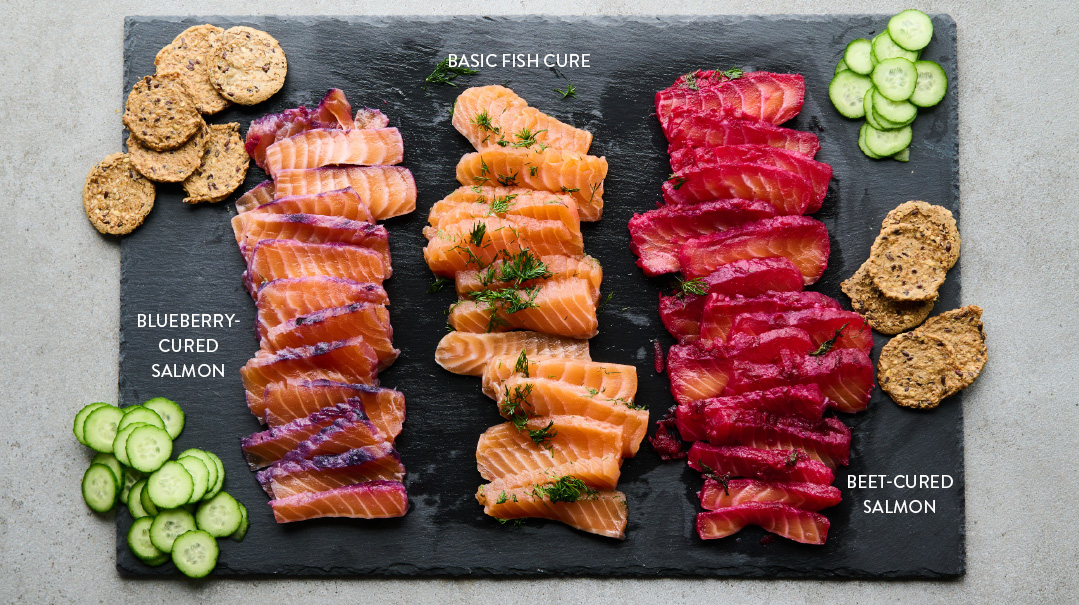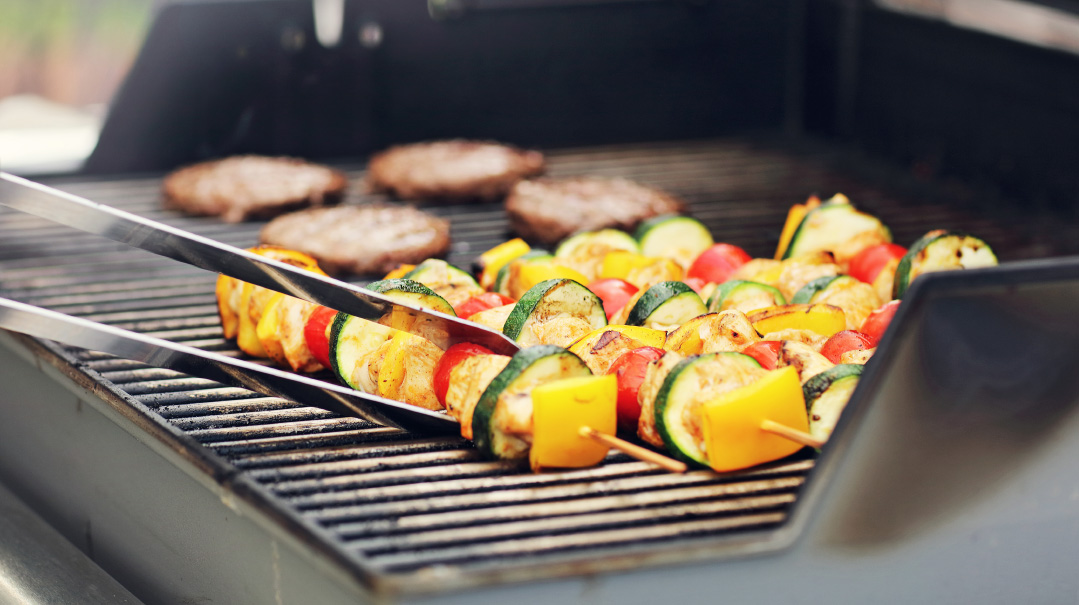Nutrarian Diet

Would we be better off with a severely restricted diet?

My husband came home from a routine checkup at the doctor in a state of shock. “My sugar reading was in the danger zone,” he said. “The doctor wants me to go onto medication right away to stabilize my blood sugar.
Having lost a brother to diabetes, it was only natural he should be petrified. His sugar had run high in the past, but he’d always managed to put things back in order by eating better and shedding a few pounds. Now we were a few years older and, after a couple of long and challenging Covid years, had let ourselves go. It was time to do penance for Chanukah donuts, Purim hamantaschen, and lotsa lotsa matzah.
A couple of days later, courtesy of our nephew Menachem, a book arrived in the mail entitled The End of Diabetes, by Dr. Joel Fuhrman. Dr. Furhman is an advocate of a “nutrarian” diet, i.e., a mostly vegan diet that promotes whole foods which pack the most nutrition into the least calories. We’d heard about this diet because Menachem had done it himself, for different health reasons, a couple of years ago. We’d watched him melt away until he was half his size, happily downing huge bowls of salad, whole grains, and nuts. But we also remembered the basic guidelines: No sugar. No white flour (almost no flour at all). No oil. No salt. Almost no meat, fish, or dairy — just plant-based whole foods.
Dr. Fuhrman claims that even his insulin-dependent diabetic patients, simply by following this diet, can reduce or eliminate their need for medication and will quickly shed pounds. We were desperate to get my husband’s sugar levels out of the danger zone. We had the book. We were going to give it a try.
The Diet’s Purpose
Diabetes is no joke, and it’s only increasing in “well-fed” countries. The CDC says one in ten Americans has diabetes, with 90–95 percent of them having the type 2 version, which develops in adulthood. Our diet has much to do with it — we eat way too much of processed foods, which are full of sugar, salt, and fat.
Dietician and vegan guru Brenda Davis headed a study in the Marshall Islands, where the native population had never had diabetes until they began eating Western-style food. She put a portion of that population on a whole-food, plant-based diet, and their diabetes, obesity, and many other health complaints disappeared. Dr. Fuhrman claims this diet allows the body to heal itself by eliminating damaging foods, and it can heal many conditions — from hypertension to autoimmune diseases.
The goal is to consume foods that have a high nutritional value relative to the amount of calories they contain. Kale has very few calories and lots of vitamins and fiber. Candy has lots of calories and very little vitamins or fiber. The diet can contain plenty of carbs as long as they’re whole foods, not processed carbs (think wheat berries, quinoa, whole buckwheat, or unhulled barley instead of bread, Cheerios, and muffins).
Dr. Ronnie Herschmann, a cardiologist with a practice in Lake Success, NY, was won over to the diet through one of his patients, a 70-year-old woman with such severe hypertension and arthritis that it often took her an hour just to get out of bed in the morning. One day she came in for a checkup and her blood pressure reading was completely normal. “What did you do?” Dr. Herschmann marveled.
“My son is a health coach and he put me on this diet,” she replied. “I hate the food, but I love the way I feel!”
Dr. Herschmann got in touch with the son, who’d once suffered from asthma, hypertension, and diabetes. After adopting this diet, he was able to drop six medications and eventually ran triathlons. “My wife and I were convinced,” Dr. Herschmann says, continuing, “this is a very anti-inflammatory diet which eliminates the toxins and cholesterol in animal proteins. It’s not easy — so much of our social lives revolve around simchahs and barbecues and restaurants. But like kashrus, it’s a commitment.”
Jumping In
But — no sugar, salt, oil, or flour? No animal products? Eeeks! What were we supposed to eat?
Okay, eliminating sugar wasn’t so hard, since fruit is allowed and there are diet-compliant desserts you can make, like frozen fruit sorbets and chia seed puddings. No salt — well, gentle reader, I did cheat a little on this one as we don’t have heart or blood pressure issues. (I figured better to approach this like becoming a BT — don’t expect to take on everything all at once.) No flour — gulp. No oil — how would I make just about anything without oil? But Dr. Furhman says oil is empty calories. Much better to get your fats through consuming nuts and seeds; since the lipids are mixed with fiber, it slows down their absorption, and you ingest more vitamins.
So I dried my culinary tears and set about trying to comply. This was a bigger adjustment than giving up chometz products on Pesach! Much more nerve-wracking! And there were no glossy Family Table supplements to inspire me with tempting recipes!
I realized I was woefully unprepared. The diet is very legume-centered, and I don’t love beans, nor did I have enough in my pantry. With so many vegetable-based meals, you have to keep a fridge well-stocked with produce. “You have to read books, acquire several cookbooks, and shop for produce a few times a week,” Dr. Herschmann avows. “It helps to use a health coach who can teach you tricks and recipes, because there’s no fast food here.” One of the health coaches he recommends, Jill Goldberger of Mineola, agrees. “It’s like learning to drive a car,” she says. “My biggest challenge is to help people make it work. As long as you’re open-minded, you can learn.”
Dr. Fuhrman’s menus for diabetics in the first two weeks were very strict and practically grain free, meant to cleanse or jump-start the body on its way to be free of sugars and artificial substances. The menus go something like this: Breakfast — oatmeal or fruit salad with a few nuts. Lunch and dinner — a big salad with either beans/lentils or cooked vegetables or vegetable soup. I tried black bean or lentil stew, pan-cooked zucchini, lentil or vegetable soup, and bean-based burgers.
I’d opted to follow the diet with my husband, because I also needed to do teshuvah for a winter of overindulging (too many cups of coffee, accompanied by cookies, while writing Mishpacha articles at my computer). Well, gentle reader, I was hungry at first! Man doth not live by vegetables alone! It was like the old joke about Chinese food — you fill up, and an hour later you’re hungry again. Before long I was fed up, no pun intended, with watery veggie food. Once in a while I snuck a hunk of matzah so as not to float away, and once or twice, in the spirit of rebellion, ate a square of chocolate.
But after the first two weeks (for diabetics), you can add more whole grains and beans into the diet. Once I began adding quinoa, whole kasha, wheat berries, etc., there was something to eat that felt more filling than vegetables, and my body began to adapt. On Shabbos, we allowed ourselves portions of challah, fish, and meat (Dr. Fuhrman reluctantly allows a small amount per week, so we saved it for then). “I tell people, ‘You don’t have to be perfect,’” Jill Goldberger says. “Unless you’re really sick, make the best choices you can.”
I started finding more recipes we could live with; I even made “brownies” with black beans, dates, walnuts, and chia seeds. (Like Pesach brownies, they’re not bad as long as you don’t expect them to be exactly like regular brownies.) On the other hand, as on Pesach, I was making everything from scratch and felt like I was spending hours in the kitchen making cooked breakfasts, lunches, and suppers.
Lessons from the Trenches
Here is what I learned after a month of nutrarian eating:
Lesson #1: You can live without flour products, but it’s an adjustment. I missed the convenience of slapping a quick sandwich together instead of stewing lentils on a stove. The diet permits sprouted breads once in a while; on Shabbos, Dr. Herschmann eats whole wheat or spelt pita, and Jill recommends Ezekiel bread. (The issue with regular flour is that it’s more refined than whole grains, therefore less nutritious and absorbed too quickly by the body.)
Lesson #2: You can live without sugar. The diet includes lots of fruit and date-sweetened desserts. Dr. Fuhrman says no artificial sweeteners, as they stimulate the pancreas and don’t train you off your sweet tooth, so we cut down but didn’t eliminate them completely. We missed cookies, so I cheated just a tad and made two kinds of almond-flour biscotti (lemon and nut) that included an egg and just a tad of sweetener.
Lesson #3: You can live without animal products, but I did miss them — Greek yogurt or a good hunk of cheese on a cracker. Having meat once a week on Shabbos was enough for me, but during the week I craved some tuna or a piece of fish. Dr. Herschmann explains that fish imbibe toxins and carcinogenic plastics from the ocean, and while a piece of salmon contains omega-3s and fatty acids, it has every bit as much cholesterol as a piece of steak. As for dairy foods, they’re very inflammatory, and the protein they contain, casein, is acidic and actually draws calcium away from the bones. “Dairy doesn’t prevent osteoporosis — it causes it!” he states.
Lesson #4: Doing without oil works with some dishes, but not as well with others. When I first read Dr. Fuhrman suggesting you “sauté” onions, garlic, etc., in water, I thought, “Yeah, right. No way!” But I tried it, and it didn’t affect my soups and stews too terribly. I made hummus without oil and it was fine, ditto with Moroccan beet and carrot salads. I made salad dressing with lemon juice, crushed garlic, mustard, and a little almond milk, but it wasn’t quite the same without olive oil. And having tried bean or quinoa burgers in the past, I found that the baked versions just weren’t as tasty. No golden crust, no richness — they were either dried out or mushy.
Lesson #5: Spice it up to make the food more interesting. It helped that I usually use lots of herbs and spices in my cooking. Onions, green onions, leeks, garlic, jalapeño peppers, and fresh and frozen herbs make a huge difference. Cumin, chili powder, and smoked paprika are good with beans, and cinnamon livens oatmeal and cookies. Low-salt soy sauce and mustard are allowed as well.
Where’s the Nosh?
What do you do for grab-and-go food on a diet where fast food doesn’t exist? When we’re on the run, I take lots of fruit, cut-up veggies (often with homemade hummus or techina for dipping), peanuts, nuts, and seeds. Brenda Davis allows oil-free popcorn, and I try to keep on hand diet-compliant cookies or chia seed pudding (which takes five minutes to make in a blender or food processor).
Instant meals are harder, but I recently bought these Gefen packets of organic pre-cooked lentils and chickpeas, and they’re pretty good heated up with just a little fresh garlic and parsley. Put some salad on the side and you’re good to go!
Resources recommended by Dr. Herschmann:
Documentaries:
Forks Over Knives, Seaspiracy
Books:
Dr. Joel Fuhrman,
Eat to Live, The End of Diabetes
Dr. T. Colin Campbell and Thomas M. Campbell,
The China Study
Dr. Neal Barnard, Reversing Diabetes
Chef AJ,
Unprocessed
Dr. Pamela A. Popper and Glen Merzer,
Food Over Medicine
Dr. Dean Ornish,
Undo It
The Bottom Line
We’ve survived our first month, and just as Dr. Fuhrman promised, my husband’s blood sugar plummeted to almost quarter of what it was. There were mornings he woke up and had to eat right away because it had dipped so low. We’ve both lost a few pounds (lest I forget, the diet recommends exercising twice a day, even if it’s just walking).
The real skinny on this experiment? I’m a little weary of beans, lentils, and vegetables all the time, and of spending so much time in the kitchen, although I imagine I’ll gradually discover more efficient and tasty ways to cook for this diet. I haven’t been completely won over to the plant-based philosophy: I believe in balance, and that Hashem created animals for us to use for food — within reasonable limits, of course. (I looked at one vegan blog that said we shouldn’t eat fish because fish don’t want to die. Frankly, I just didn’t find that convincing — is it better for a fish to be eaten by a shark? Did that blogger think animals die peacefully in bed, surrounded by family and friends?) On the other hand, vegan authority Dr. Neal Barnard says animal fat consumption is correlated with getting Alzheimer’s, which is a pretty compelling reason to stay away from those foods.
In my house, we’ll continue to cut out sugar, diminish the salt, and slash our oil intake. As with Pesach, I’ll work on figuring out creative ways to work within tight parameters. But I’ll probably want to indulge in a little animal protein from time to time, even if it’s just fish and cheese. And more bread — let’s face it, pas shacharis really is a thing in Torah, and I trust Chazal to tell me what’s healthy.
On the other hand, five pounds and hundreds of blood sugar points down, who can argue with success?
Black Bean Brownies
(from Brenda Davis’s The Kick Diabetes Cookbook)
- 1½ cups cooked or canned black beans, drained and rinsed
- ¾ cup packed pitted soft dates
- ⅓ cup unsweetened cocoa powder
- 3 Tbsp almond butter or other nut butter
- 3 Tbsp ground chia seeds or flaxseed
- 1 tsp vanilla extract
- ½ cup chopped walnuts
Preheat oven to 200°F (100°C). Mist an 8-inch square baking pan with cooking spray or line with parchment paper.
Into the bowl of a food processor, put the beans, dates, cocoa powder, almond butter, chia seeds, and vanilla and process until smooth. Add the walnuts and pulse until evenly distributed. Pat into the prepared pan. Cover and bake for 11⁄2 hours. Cool completely before cutting into squares. (We like these cold and fudgy from the fridge.)
Oil-Free Hummus
This was inspired by a Dr. Fuhrman recipe, and my family liked it — they didn’t even suspect I used white beans instead of chickpeas.
- 1 15-oz (425-g) can white beans
- 2 Tbsp lemon juice
- 2 Tbsp tahini paste
- 1 Tbsp vinegar
- 2 Tbsp water
- 2 cloves garlic
- ½ tsp cumin
- ¼ cup fresh parsley (optional)
Put all ingredients in a food processor and blend until smooth.
Chia Seed Pudding
(from Brenda Davis’s The Kick Diabetes Cookbook)
- 2 cups unsweetened soy or other nondairy milk (I used Califia extra-creamy almond milk)
- ¼ cup pitted soft dates
- 1 tsp vanilla
- ¼ cup cocoa (optional)
- ¼ cup chia seeds
In a blender, process milk, dates, and vanilla (and cocoa if you’d like a chocolate version) until smooth. Add chia seeds and pulse to distribute them but not blend them. Transfer to a storage container and refrigerate at least two hours. Stir before serving to break up any clumps of chia seeds.
Fast Chickpea Salad
- 1 15-oz (425-g) can chickpeas, rinsed and drained
- ¼ cup diced red onion
- 2 scallions, sliced
- ¼ cup chopped fresh parsley
- 2 Tbsp white vinegar
- ½ tsp chili powder
- black pepper, to taste
Mix ingredients together and serve with a big salad.
(Originally featured in Family Table, Issue 802)
Oops! We could not locate your form.

